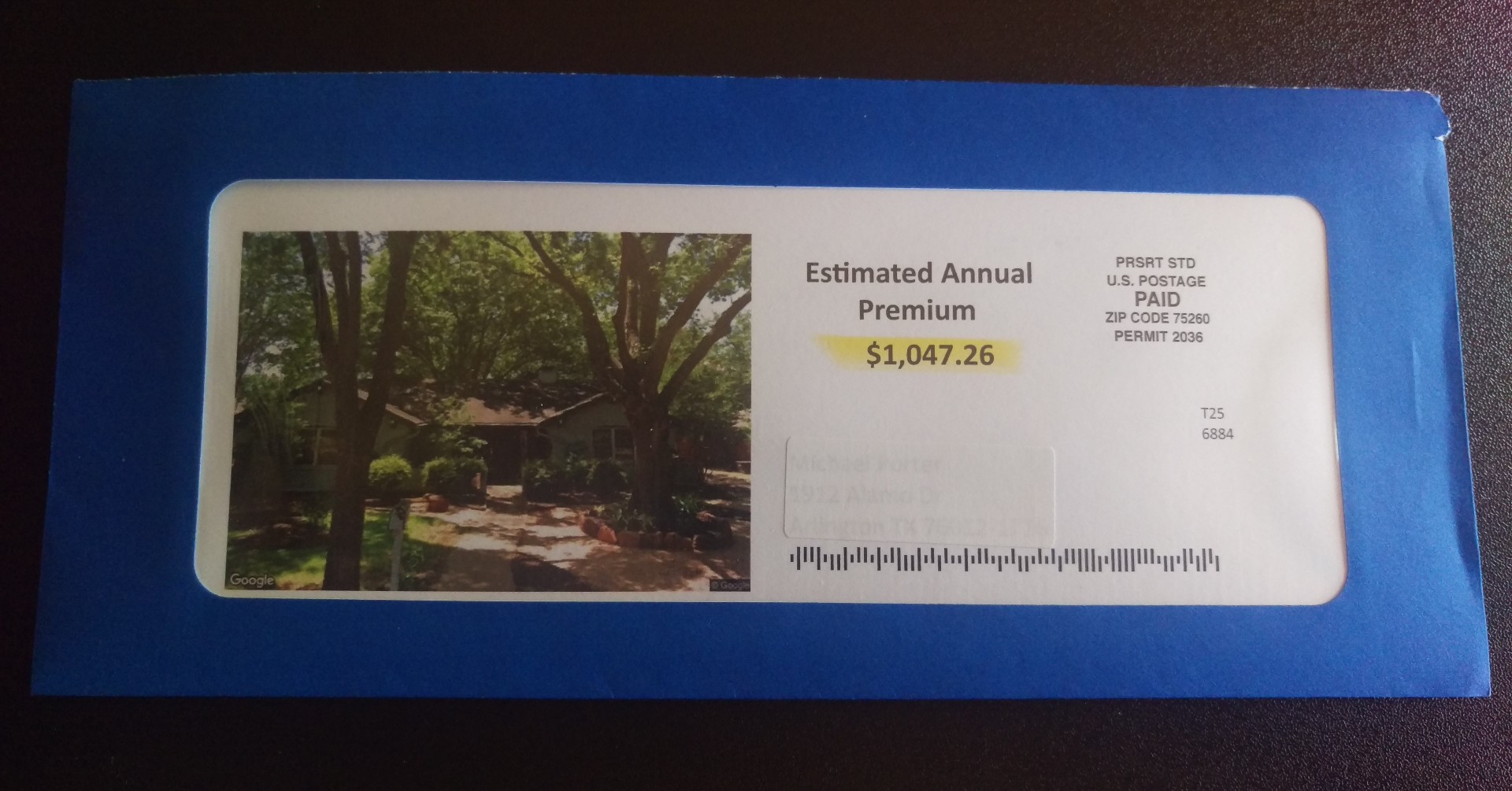Abandon the “One Size Fits All” Method of Customer Communication |
| By Mike Porter |
|
|
|
In the days of offset print, unintelligent mail inserting machines, and COBOL document generation programs, sending every customer the same generic information was all print and mail professionals could manage. Now that we're printing with digital toner or inkjet devices and using sophisticated document composition software, we don't have to do it that way any longer.
This week I received a simple piece of direct mail. The single sheet of paper came in a #10 colored envelope that featured a large window. Most of the width of the enclosed document was visible. What really got my attention was the photo of my home that was pictured on the page. Also seen through the window was an estimated premium, including savings I could realize by switching my homeowner insurance. 
I called this a simple piece, because it’s just a one-page letter, but the mailer made excellent use of data available to them. They told me my home insurance is up for renewal (they are right; it renews next month), greeted me by my first name in the salutation line, and showed me how they calculated my premium based on details like an accurate estimate of my home’s value.
Simple to Do Mail like this is far removed from the mass mailing methods marketers used in the past. The insurance broker didn’t send this letter to everyone in my ZIP Code, only to homeowners whose insurance policies were about to renew. They didn’t resort to fictitious amounts, but used real numbers to compute the savings benefits, and they used an actual photo supplied by Google to get me to open the envelope.
All this personalization does not change the production cost of the mail piece one bit, but it makes a big difference in effectiveness. By segmenting the mailing list and targeting prospects at the right time, marketers like the small insurance agency contacting me will mail fewer pieces. But this strategy allows them to afford multiple direct mail campaigns and realize a decent return on their investment.
This is a great example of how mailers can take the tools and data available to them and turn an otherwise humble marketing piece into something that has a much better chance of delivering a positive result. These are the jobs print and mail service providers should be seeking. If the mail creates leads and revenue, marketers will repeat the process over and over. Repetitive business like this is better than a customer who blows their entire budget sending untargeted generic marketing pieces to a huge mailing list and is disappointed in the results. They won’t be back, and might even blame the service provider for the poor performing campaign.
Not Just for Marketing Personalization, timing, and targeting can apply to transactional documents as well. With just a little more work in data preparation and document design, print/mail service providers can help their clients approach their customers with on-statement messaging and offers more likely to create a response than the one-size-fits-all bill stuffers many organizations still use.
Some document modifications are simple. As the home insurance mailer demonstrates, variable data printing needn’t be complicated to be effective. Some simple logic and data manipulation can turn a wasted effort into one with an enhanced opportunity for conversion. Print service providers should inspect the client documents they produce, looking for ways they can improve them by adding just a touch of personalization and targeting.
You probably get untargeted, random direct mail delivered to your mailbox. I sure do. As a mailing professional, you probably look at those pieces and think about the money and effort spent to send a mail piece with little chance of sparking the mailer’s desired response. If your clients bring you such projects, it’s in your best interest to show them an improved approach. Continuing to send generic mail is not a sustainable practice. Soon, print/mail companies that haven’t leveraged the capabilities that their software and hardware afford them won’t be able to compete. The mass mailing approach may continue to work for a while, but I predict that untargeted generic direct mail will eventually die out completely.
|
